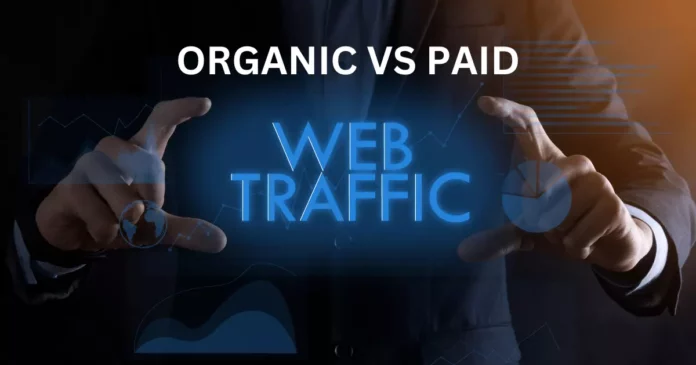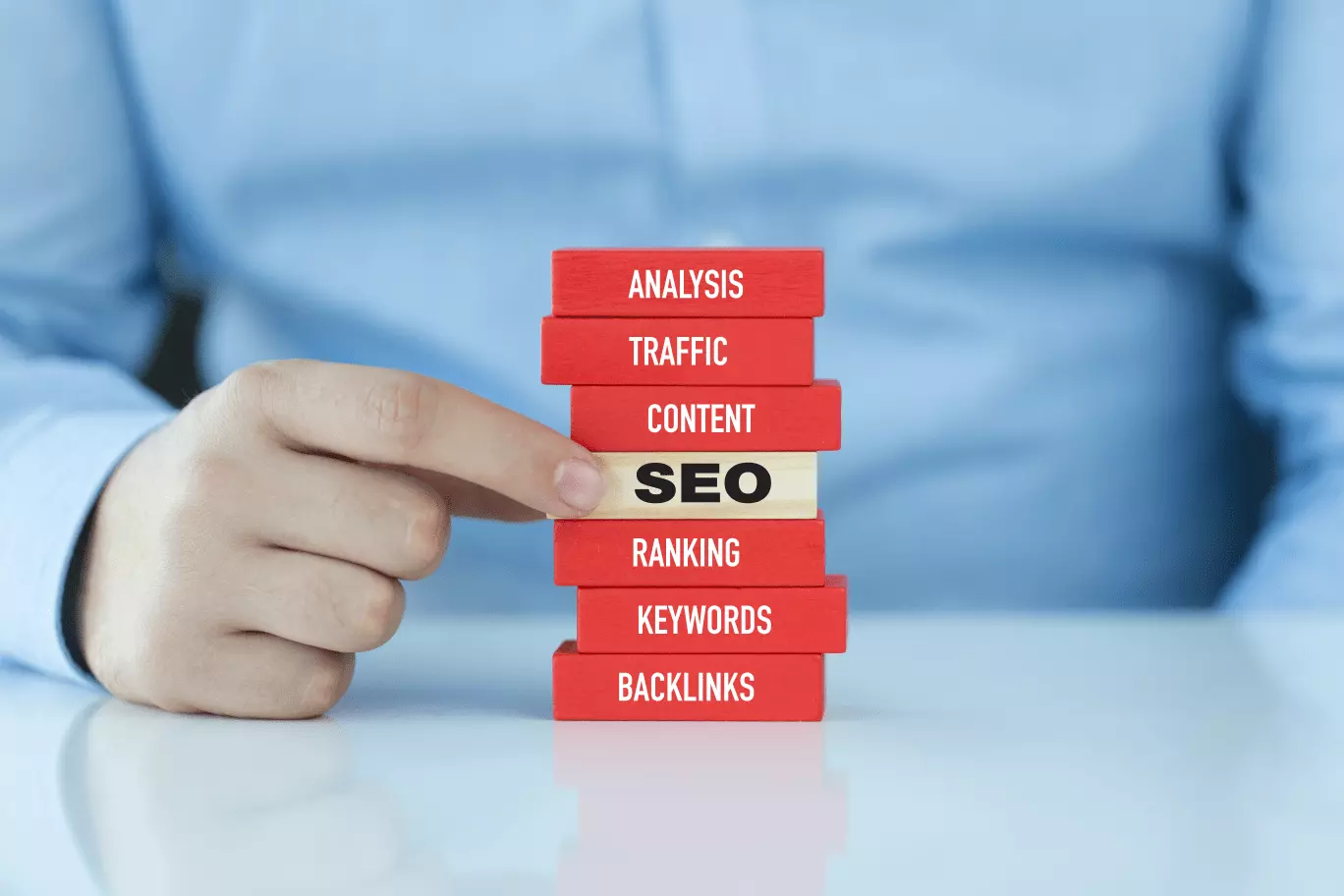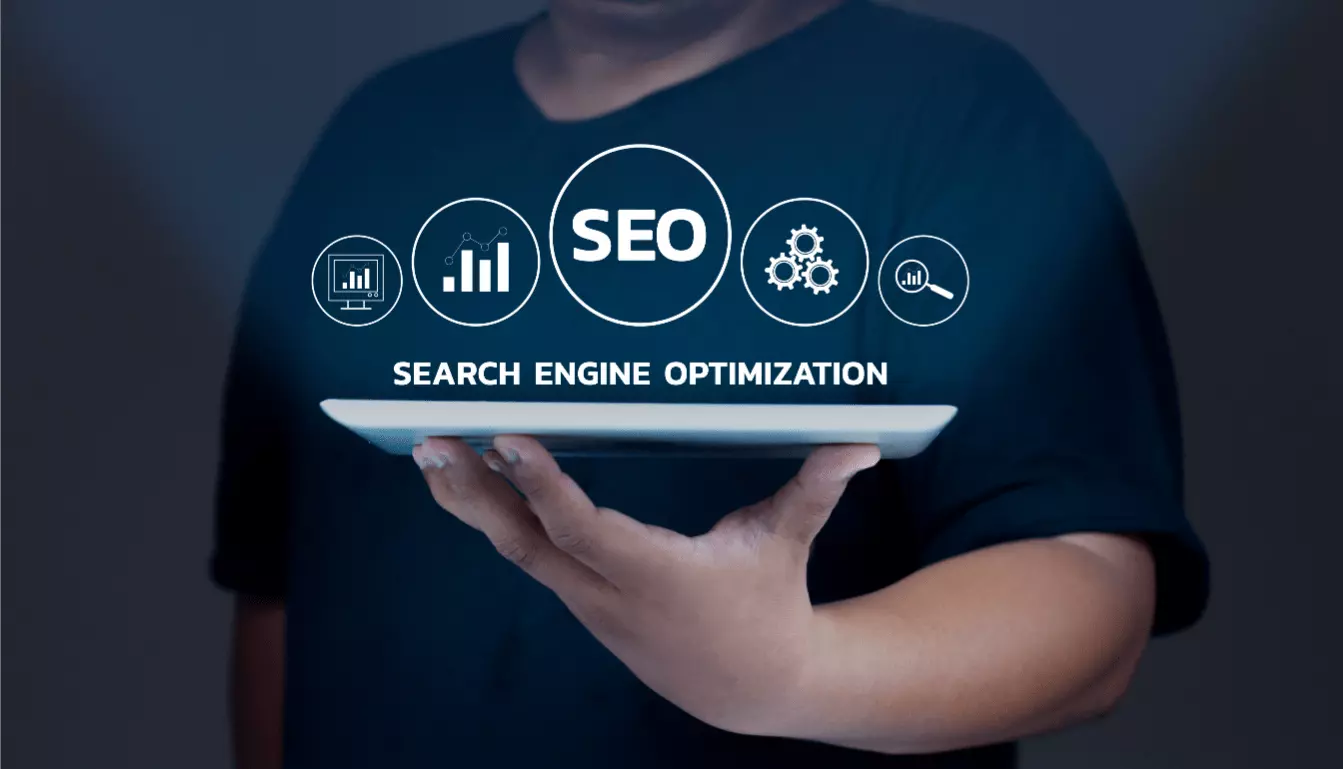Have you ever wondered how people find websites?
In the vast expanse of the Internet, there are two primary pathways that lead visitors to your website: organic traffic and paid traffic.
Both of these channels play a vital role in driving visitors to websites, each with its distinct characteristics and impact.
In this article, we’ll highlight the differences between organic and paid traffic, revealing the complex mechanisms that govern their roles in website visibility.
By the end of this article, you’ll gain valuable insights into the dynamics of these traffic sources and be equipped with the knowledge to make informed decisions about your online presence.
Let’s begin!
What Is Organic Traffic?
Organic traffic refers to website visitors acquired naturally through search engines without paid promotion.
It results from content relevance, SEO, and user engagement, providing sustainable, unpaid visibility based on a site’s quality and relevance to users’ queries or interests.
What Is Paid Traffic?
Paid traffic involves acquiring website visitors through paid promotional efforts, such as PPC (Pay-Per-Click) advertising, sponsored content, or display ads.
It requires a financial investment and targets specific demographics or keywords, providing immediate visibility and traffic to a website through paid advertising channels.
What Is The Difference Between Organic Traffic And Paid Traffic?
Organic traffic and paid traffic are two distinct types of website traffic methods.
Organic traffic refers to visitors who find your website through unpaid, organic search engine results.
It’s driven by content quality, SEO efforts, and user relevance, cultivating long-term growth but requiring time and consistent optimization.
In contrast, paid traffic involves acquiring visitors through paid advertising channels like PPC (Pay-Per-Click), display ads, or sponsored content.
It offers immediate visibility, targeting specific demographics or keywords, but demands a monetary investment that can fluctuate based on bidding and campaign settings.
Paid traffic yields quicker results but relies on continuous funding.
While organic traffic relies on content quality and SEO, paid traffic relies on financial investment and ad targeting strategies.
A balanced approach leveraging both can maximize a website’s visibility and audience reach.
What Are The Benefits Of Organic Traffic?
The benefits of organic traffic are:
1. Organic Traffic Is Free.
A significant advantage of organic traffic methods is their cost-effectiveness.
While there is an option to invest in boosting organic traffic through paid SEO tools or agency services, it is not a prerequisite.
This benefit can be particularly advantageous for startups or businesses with limited marketing budgets.
The most valuable investment in organic methods is time.
SEO strategies take time to yield results, but they often produce remarkable outcomes.
2. Increases ROI.
Optimizing your website for search engines can significantly increase your return on investment (ROI).
While it may be challenging to quantify these benefits in exact figures, it’s evident when your SEO strategies are effective.
Numerous marketing case studies have highlighted the advantages of a well-implemented SEO strategy.
In fact, nearly 90% of marketers report successfully leveraging SEO to boost traffic.
3. Compounding Benefits.
When focusing on organic traffic, one of the most important aspects is creating and sharing high-quality content.
By consistently delivering valuable and insightful content, you establish your website as a trusted source of information and attract a wider audience.
This can lead to an increase in traffic, leads, revenue, and search engine rankings.
4. Boosts Credibility.
Optimizing your website for organic search can significantly enhance your site’s credibility.
When your website appears at the top of search results pages, it conveys to users that you are a reputable and authoritative voice within your industry.
This is particularly evident when comparing organic and paid traffic.
Users are more likely to click on your website if it ranks organically (as opposed to appearing in the paid ads section).
In fact, a study revealed that 53% of web traffic stems from organic search, while only 27% originates from paid ads.
5. Bring In Relevant Users.
Another significant advantage of organic search is its ability to attract a larger pool of relevant users to your website.
While paid search tactics allow you to target highly specific audiences, organic methods enable you to draw in a diverse pool of users simultaneously.
By prioritizing organic strategies, you can captivate users who actively seek content pertinent to your website’s offerings.
6. Provides Helpful Data.
Combining organic methods with an SEO toolkit or data analytics manager can provide valuable user insights for your marketing team.
Most content management platforms have built-in analytics tracking.
Your team can leverage this information to identify relevant keywords, target specific audiences, and assess the performance of your content.
This comprehensive understanding can be used to refine your overall SEO strategy.
7. Supports A Connected Marketing Approach.
Focusing on organic traffic promotes a complete and connected marketing plan.
As SEO tactics often require time and effort to generate results, they can effectively complement your other marketing strategies.
For instance, social media content can attract attention to your website, while targeted email marketing campaigns nurture leads.
By combining these strategies into a unified plan, you can effectively capture users at various stages of the marketing funnel.
What Are The Demerits of Organic Traffic?
The demerits of organic traffic are:
1. Search Engine Algorithms Change.
Search engines, especially Google, frequently alter their algorithms, demanding ongoing monitoring of marketing strategies and organic results.
These shifts mean staying vigilant to adapt strategies as per the new rules set by these engines.
This dynamic nature necessitates flexibility and continuous adjustments to maintain visibility and rankings.
2. Regular Website Optimization Is Essential.
Achieving a ranking for target keywords isn’t a one-time job.
Continuous optimization is crucial to sustain rankings and relevance.
Regularly refreshing content, updating web pages, and removing outdated links are vital to ensure your site remains competitive and visible.
3. SEO Results Take Time.
For new websites or domains, immediate results from SEO efforts are unlikely.
Numerous factors impact how Google ranks websites, and establishing credibility and authority often takes time.
Early-stage websites might not see significant results in the initial weeks or months, requiring patience and persistent effort.
4. Demands Specialized Skills.
Executing effective SEO strategies demands high-level skills and expertise.
Without professional help, understanding audience goals and delivering quality content becomes pivotal in optimizing sites for search engines.
Juggling business operations with technical SEO, content creation, and link-building can be overwhelming, emphasizing the need for a dedicated approach and commitment to generate revenue through SEO strategies.
What Are The Benefits Of Paid Traffic?
The benefits of paid traffic are:
1. Instant Results.
One of the biggest benefits of paid traffic is that it can deliver results quickly.
Unlike SEO, which can take months or even years to see results, paid search can start driving traffic to your website within minutes of launching your campaign.
This makes paid traffic a great option for businesses that need to generate leads or sales fast.
2. Targeted Reach.
Paid traffic allows you to target your ads to the people who are most likely to be interested in your products or services.
This means that you can avoid wasting your advertising budget on people who are not a good fit for your business.
You can target your ads by location, demographics, interests, and even past online behavior.
3. Measurable Results.
Paid campaigns are one of the most measurable forms of advertising.
This means that you can track the performance of your ads and see how they are impacting your business.
You can track metrics such as clicks, conversions, and cost-per-acquisition (CPA).
This data can help you to make informed decisions about your advertising campaigns and optimize them for better results.
4. Controllable Budget.
The great thing about paid traffic is that you can control your budget.
You can set a maximum amount that you are willing to spend per day or per campaign.
This gives you peace of mind and ensures that you never overspend.
5. Generates High-Quality Leads.
One significant advantage of focusing on paid advertisements is that paid methods tend to attract users who are ready to make a purchase.
Users who search for a particular product or service using the paid ads section know what they want and are looking for the best option available.
Targeting these qualified leads with your ads can result in increased traffic and conversions for your business.
5. High ROI.
Paid traffic can be a very cost-effective way to reach your target audience.
When done correctly, paid traffic campaigns can deliver a high ROI.
In fact, studies have shown that businesses can earn an average of $8 for every $1 they spend on Google Ads.
What Are The Demerits Of Paid Traffic?
The demerits of paid traffic are:
1. Paid Traffic Is Expensive.
Paid traffic campaigns require money to run, making it an expensive strategy.
Each click on your links incurs a cost, and when your budget runs out, your traffic stops.
In highly competitive sectors like legal or insurance, Pay-Per-Click (PPC) ads can escalate in price, sometimes reaching as high as $40 per click, adding to the financial challenge of sustaining paid traffic.
2. Limited Longevity And Control.
Paid ads often become repetitive due to restrictions imposed by platforms like Google.
These limitations mean your ad copy might resemble your competitors’, reducing its uniqueness and impact.
Consequently, audiences might overlook these ads swiftly, leading to decreased effectiveness and a shorter lifespan for your paid campaigns.
Which Is Better: Organic Traffic Or Paid Traffic?
The superiority of organic or paid traffic depends on specific business objectives.
Organic traffic, acquired through search engine optimization, reflects genuine interest and sustains long-term growth.
It’s cost-effective but demands time.
Conversely, paid traffic, obtained through advertising, provides immediate visibility but requires continuous investment.
The choice hinges on short-term goals, budget constraints, and the desired balance between sustainability and quick results.
Successful strategies often integrate both organic and paid approaches for a comprehensive and effective online presence, leveraging the strengths of each to maximize overall traffic and business outcomes.
How To Increase Traffic To Your Website?
While paid and organic search methods can be effective independently, combining them can significantly boost traffic and enhance your overall marketing strategy.
Two primary approaches exist for integrating these two strategies:
The first approach involves utilizing paid advertising initially and gradually transitioning to a focus on organic strategies.
This method can be particularly beneficial for new businesses seeking a rapid traffic surge.
As SEO outcomes may take 3 to 6 months to materialize, some companies may not have the luxury of waiting that long.
The second approach involves employing both paid and organic search simultaneously.
This strategy can be highly effective as many aspects of these two methods complement each other, ensuring a consistent increase in traffic from diverse sources.
Carefully consider your marketing budget, objectives, and timeline when crafting your overall marketing plan.
Periodically review your strategies to identify which methods have proven successful and which require refinement.
By employing a combination of paid and organic search methods, you can effectively attract a broader audience, enhance your website’s credibility, and achieve your business goals.
Conclusion.
In the ever-evolving world of digital presence, understanding the difference between organic and paid traffic is fundamental.
As we draw the curtain on this exploration, remember that both avenues have their own unique strengths in driving visitors to your website.
Your success depends on a balanced approach that harnesses the power of both organic and paid traffic.
By taking advantage of these insights, you can improve your strategies, increase your visibility, and ultimately lead your digital journey to greater success.
Keep optimizing, experimenting, and let the synergy between organic and paid traffic take your website to new heights in the vast online landscape.







